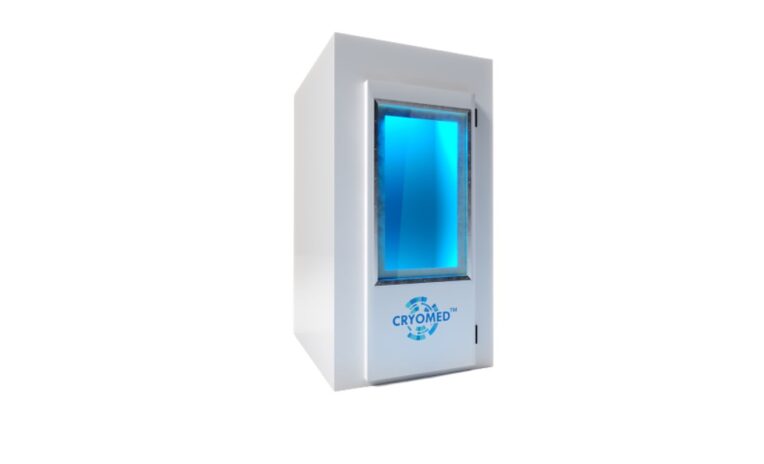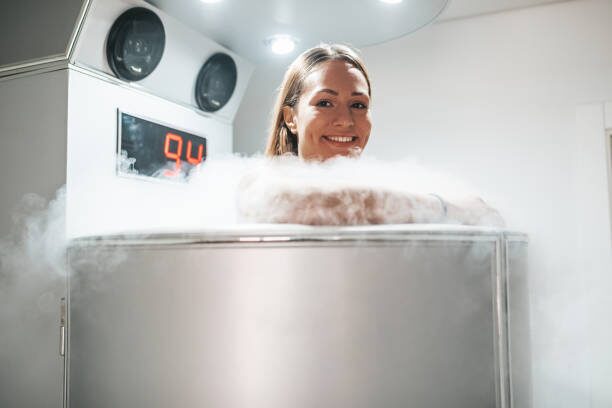Cryotherapy is a cutting-edge treatment that involves exposing the body to extremely cold temperatures for a short period of time, typically ranging from -100°C to -170°C. The treatment is used to relieve muscle soreness, reduce inflammation, and improve recovery after intense physical activity or injury.
In addition, extreme exposures are beneficial for anxiety and stress release, improving sleep and enhancing overall well-being.
As more wellness businesses look to incorporate cryotherapy services into their offer, understanding cryotherapy machine cost becomes crucial. This guide aims to provide a comprehensive overview of the factors influencing the price of cryogenic devices, ensuring that potential buyers can make informed decisions.
Factors Influencing Cryotherapy Machine Costs

Cryotherapy machines vary by cooling method and treatment scope. Here’s a summary of the key types:
- Nitrogen cryosaunas ─ Use liquid nitrogen to cool a cabin for whole-body sessions down to the maximum of -170૦C, lowering skin temperature to induce thermal shock.
- Electric cryo chambers ─ Employ electric cooling to chill the chamber (between -60૦C to -110૦C), offering a nitrogen-free option for whole-body cryotherapy.
- Hybrid cryotherapy machines ─ Merge nitrogen and electric technologies, allowing “head-in” treatments and closed-loop nitrogen cooling down to -110૦C.
- Cryogenic blowers for local cryotherapy ─ Target specific areas with extreme cold, ideal for localized pain, injury, or skin treatment, without affecting the entire body.
Each machine type serves diverse needs, enabling businesses and practitioners to provide tailored cryotherapy experiences, whether aiming for whole-body effect or focused relief.
Technology and Features
The technology behind the machine significantly impacts its price. Advanced features such as advanced safety and multimedia options, or extra accessories can increase the cost. Moreover, machines that use liquid nitrogen or electric cooling systems also vary in price due to the differing technologies and operational costs involved.
Brand and Quality
Reputable brands known for their quality and reliability often command higher prices. Investing in a machine from a well-known manufacturer can ensure longevity, effectiveness, and better customer support, which might justify the initial higher outlay.
New vs. Used
The decision between purchasing a new or used cryotherapy machine can affect the cost significantly. While new models come with the latest technology and warranty protection, used or refurbished machines can offer substantial savings. However, it’s important to carefully assess the condition and reliability of used equipment.
Average Cost of Cryotherapy Machines

Exploring cryotherapy equipment involves understanding the varied costs for different machine types, influenced by their technology, treatment scope, and features. Here’s a brief overview of the average costs:
- Nitrogen cryosaunas ─ Utilizing liquid nitrogen, these are used for whole-body treatments and cost between €20,000 to €70,000, offering an affordable entry for whole-body cryotherapy services.
- Electric cryo chambers ─ These machines, which cool the air electrically without nitrogen, range from €65,000 to €270,000, depending on their one-, two- or three-chamber design that may require additional cooling.
- Hybrid cryotherapy machines ─ Combining nitrogen and electric cooling, hybrids are priced at €60,000 to €120,000, suitable for those wanting to get the benefits of both types.
- Cryogenic blowers for local cryotherapy ─ Targeting specific body areas, these devices are priced from €4,000 to €16,000, ideal for adding localized treatments affordably.
These price ranges are crucial for budgeting and choosing the right machine for your business. Remember, additional costs like shipping, installation, and maintenance can also impact the total investment.
Read more about machine types and running costs of cryogenic machines.
Conclusion
Investing in a cryotherapy machine requires careful consideration of various factors, including the type of machine, technology, brand, and whether to buy new or used. Understanding these aspects can help you navigate the market, ensuring you find a machine that meets your needs and budget.
Remember, the initial cost is just part of the investment; the quality of the machine, its running costs, ongoing support, and the benefits it brings to your business are equally important.
